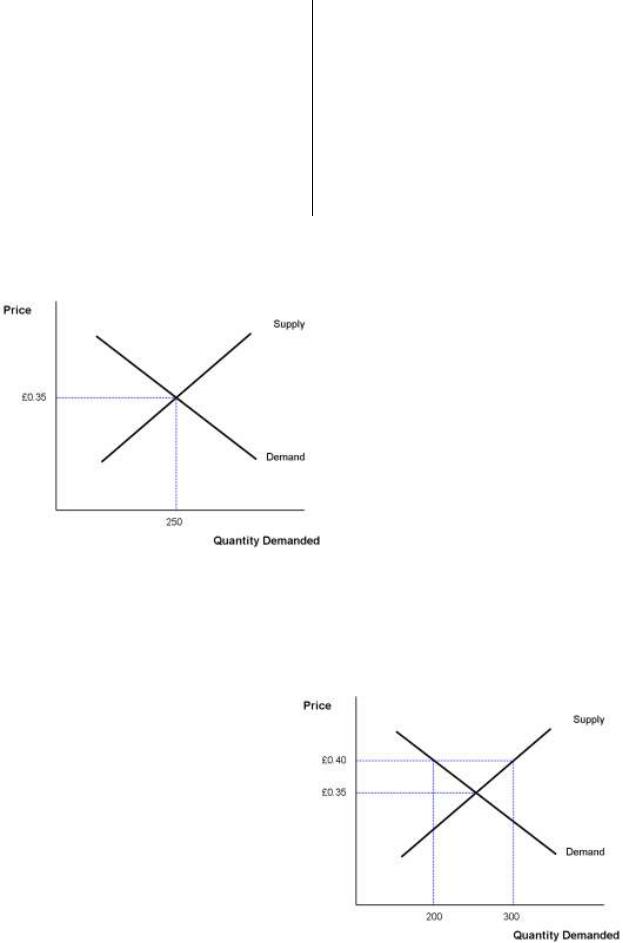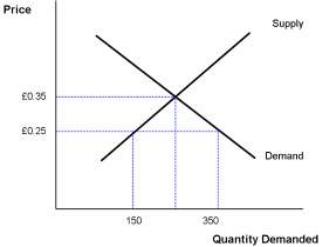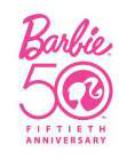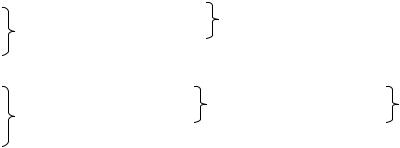
5402
.pdf
11
Unit 2
Microeconomics and Macroeconomics
Starting up
What branches can economics be divided into?
What is the difference between microeconomics and macroeconomics? What do they study?
Reading
I. Before reading match the English words to their Russian equivalent:
to give rise |
закономерный |
judicious |
дать толчок, вызвать |
to loose track |
в целом |
to make sense |
иметь смысл |
subject grouping |
потерять нить |
as a whole |
предметная группировка |
II. Read the text and check if you are right:
Many economists specialize in a particular branch of the subject. For example, there are labour economists, energy economists, monetary economists, and international economists. What distinguishes these economists is the segment of economic life in which they are interested. Labour economics deals with problems of labour market as viewed by firms, workers, and society as a whole. Urban economics deals with city problems: land use, transport, congestion, and housing. However, we need not classify branches of economics according to the area of economic life in which we ask the standard questions “what”, “how”, and “for whom”. We can also classify branches of economics according to the
approach or methodology that is used. The very broad division of approaches into microeconomics and macroeconomics cuts across the large number of subject grouping cited above.
Microeconomic analysis offers a detailed treatment of individual decisions about particular commodities. For example, we might study why
individual households prefer cars to bicycles and 















 how producers decide whether to produce cars or bicycles. We can then aggregate the
how producers decide whether to produce cars or bicycles. We can then aggregate the
12
behaviour of all households and all firms to discuss total car purchases and total car production. Within a market economy we can discuss the market for cars. Comparing this with the market for bicycles, we may be able to explain the relative price of cars and bicycles and the relative output of these two goods. The sophisticated branch of microeconomics known as general equilibrium theory extends this approach to its logical conclusion. It studies simultaneously every market for every commodity. From this it is hoped that we can understand the complete pattern of consumption, production, and exchange in the whole economy at a point in time.
If you think this sounds very complicated you are correct. For many purposes, the analysis becomes so complicated that we tend to loose track of the phenomena in which we were interested. The interesting task for economics, a task that retains an element of art in economic science, is to devise judicious simplifications, which keep the analysis manageable without distorting reality too much. It is here that microeconomists and macroeconomists proceed down different avenues. Microeconomists tend to offer a detailed treatment of one aspect of economic behaviour but ignore interactions with the rest of the economy in order to preserve the simplicity of the analysis. A microeconomic analysis of miners’ wages would emphasize the characteristics of miners and the ability of mine owners to pay. It would largely neglect the chain of indirect effects to which a rise in miners’ wages might give rise. For example, car workers might use the precedent of the miners’ pay increase to secure higher wages in the car industry, thus being able to afford larger houses, which burned more coal in heating systems. When microeconomic analysis ignores such indirectly induced effects it is said to be partial analysis.
In some instances, indirect effects may not be too important and it will make sense for economists to devote their effort to very detailed analyses of particular industries or activities. In other circumstances an alternative simplification must be found.
Macroeconomics studies the interactions in the economy as a whole. It deliberately simplifies the individual building blocks of the analysis in order to retain a manageable analysis of the complete interaction of the economy.
13
For example, macroeconomists typically don’t worry about the breakdown of consumer goods into cars, bicycles, televisions, and calculators. They prefer to treat them all as a single bundle called “consumer goods” because they are more interested in studying the interaction between households’ purchases of consumer goods and firms’ decisions about purchases of machinery and buildings.
III.Read the text more carefully and answer the questions.
1.What distinguishes different kinds of economists?
2.What branches of economics can you enumerate and what do they deal with?
3.How can we classify branches of economics?
4.What analysis offers a detailed treatment of individual decisions about particular commodities?
5.What do microeconomists tend to offer?
6.Why do microeconomists ignore interactions with the rest of the economy?
7.When is microeconomic analysis called partial analysis?
8.When does it make sense for economists to devote their effort to very detailed analyses of particular industries or activities?
9.What does macroeconomics emphasize?
Vocabulary
I. Find in the text synonyms for the following words:
to advance (para 2) |
goods (para 2) |
field (para 1) |
manufacturers (para 2) |
to invent (para 3) |
to sum up (para 2) |
to concern (para 1) |
separate (para 2) |
method (para 1) |
sophisticated (para 3) |
to propose (para 3) |
to keep (para 3) |
investigation (para 3) |
to neglect (para 3) |
II.Find in the text English equivalents for the following Russian sentences:
1.Макроэкономика изучает взаимодействия в экономике в целом.
2.Экономика труда занимается проблемами рынка с точки зрения фирм, рабочих, общества.
3.Общая теория равновесия изучает одновременно каждый рынок для каждого товара.
4.Макроэкономика рассматривает все товары как единое целое под названием «потребительские товары».
5.Микроэкономический анализ подробно изучает индивидуальные решения о приобретении отдельных товаров.
6.Мы можем классифицировать экономистов в соответствии с той отраслью экономики, которой они занимаются.

14
7.Микроэкономика подробно рассматривает какой-либо один аспект экономического развития, но игнорирует взаимодействия с остальными областями экономики, чтобы сохранить простоту анализа.
III.Fill in the gaps with the words from the box (there is one odd word):
market, households, commodity, effects, branches, deals with, interactions, consumer, simplifies, macroeconomics, microeconomics
1.Urban economics … city problems.
2.We can classify … of economics according to the methodology that is used.
3.Within a market economy we can discuss the … for cars.
4.Macroeconomics … the individual building blocks of the analysis.
5.We can study why … prefer cars to bicycles.
6.General equilibrium theory studies simultaneously every market for every … .
7.When microeconomic analysis ignores indirectly induced … it is said to be partial analysis.
8.Microeconomists ignores … with the rest of the economy in order to preserve the simplicity of the analysis.
9.Macroeconomists don’t worry about the breakdown of … goods into cars, bicycles, televisions, and calculators.
10.… treats the interactions in the economy as a whole.
IV. In each group only one noun make a phrase with the verb:
1. to distort |
a) the effort |
|
b) the meaning |
|
c)the exchange |
2. to loose |
a) congestion |
|
b) circumstance |
|
c) track |
3. to pay |
a) wages |
|
b) jobs |
|
c) goods |
4. to devise |
a) housing |
|
b) simplifications |
|
c) divisions |
5. to consume |
a) chains |
|
b) branches |
|
c) goods |
V. Match the term to the definition: |
|
|
a. economics which deals with |
|
urban economics |
1. |
||
problems of the labour market |
2. |
commodities |
b. economics which deals with city |
3. |
consumer goods |

|
15 |
|
problems |
4. |
labour economics |
c. a detailed treatment of individual |
5. |
macroeconomics |
decisions about particular |
6. |
microeconomics |
commodities |
|
|
d.things that meet needs or are wanted or can be traded
e.a study of the interactions in the economy as a whole
f.goods bought by households (not by firms)
Speaking
Price equilibrium is found where supply and demand are equal. This is the point where both sellers and buyers are happy with the price and quantity.
In the example above equilibrium price is £0.35 and 250 mars bars would be demanded at this price.
-If price was £0.40, demand would be less than supply and the market wouldn’t be in equilibrium.
-If the price was £0.20, demand would be greater than supply and the market wouldn’t be in equilibrium.
Excess supply
In the first graph equilibrium is at £0.35. Supply is equal to demand.
However at £0.40 it is not at equilibrium. Supply (300) is greater than demand (200).
Therefore we have excess supply.
Price needs to fall.

16
Excess demand
In the first graph equilibrium is at £0.35. Supply is equal to demand.
However at £0.25 it is not at equilibrium. Supply (150) is less than demand (350).
Therefore we have excess demand.
Price needs to increase.
I. Using housing as an example try to
draw a supply and demand diagram showing equilibrium price and quantity. II. Do the same for excess supply and excess demand.
III. Try to explain excess supply and demand in your own words.

17
Unit 3
What is the brand?
Starting up
A brand for a company is like a reputation for a person. You earn reputation by trying to do hard things well.
Jeffrey Bezos (1964) founder, president, Chief Executive Officer (CEO), and chairman of the board of Amazon.com.
I. What is brand, brand image?
Try to give your own definition.
II.In pairs remember five
examples of popular brands in each branch. Fill in the table:
Fast food |
|
Clothing |
Shoes |
Mobile |
|
Food |
Household |
|
|
|
|
|
|
phones |
|
|
electrical |
|
|
|
|
|
|
|
|
appliances |
McDonald’s |
|
Mexx |
Ecco |
Euroset |
|
Демка |
Bosch |
|
… |
|
… |
… |
… |
|
… |
… |
|
Reading |
|
|
|
|
|
|
||
I. Match the English words to their Russian equivalents: |
|
|
||||||
1. |
to distinguish |
|
продавать больше/лучше |
|
||||
2. |
perception |
|
отличать |
|
|
|||
3. |
to get used to smth. |
|
преданность |
|
|
|||
4. |
loyalty |
|
|
восприятие |
|
|
||
5. |
revenue |
|
|
исключение |
|
|
||
6. |
awareness |
|
осведомлённость |
|
||||
7. |
to outsell |
|
товар, изделие |
|
||||
8. |
exception |
|
привыкать к ч.-л. |
|
||||
9. |
unique selling proposition |
доход |
|
|
||||
10.item |
|
|
уникальное торговое предложение |
|||||
II. Do you know what brands are the most successful? What brands are the most expensive? Read the text and find out.
A brand is a special trade mark, sign, symbol, design of the product that distinguishes it from other products. Products can be sub-brands. People have some beliefs and perceptions about a particular product that is they have the brand image.

18
Consumers get used to some brands, and prefer to buy them. Some people drink only Nescafé, prefer mayonnaise produced by Moscow fat-producing plant (MZHK) and chocolate of Krasny Oktyabr factory and so on. In this case we can speak about brand loyalty, that is commitment to a particular brand, which people regularly buy.
Some brands have names of people. Tea brand Dilmah is composed of the parts of names Dilhan and Malik, sons of the tea producer. Some brands have mistakes in their names. Brand of vegetable oil is called “Zolotaya semechka”, but according to the rules of the Russian language, it should be called “Zolotoye semechko”.
It takes up to ten years to create a brand in the West. In Russia it can only take two years. It is known that 80 to 90% of new brands fail within their first six months.
If a company gives the name of the brand to its other products it’s called brandstretching. By putting their familiar trademarks on attractive and fashionable new products, companies can both generate additional revenue and increase brandawareness. So there is Pepsi Maxwear, Camel watches and Cadbury jewellery.
Brand-stretching is not always successful.
A brand like Coca-Cola, the second most expensive one (the US-based Apple was recognized as the most expensive brand in the world), has been around a long time, and dominates the fizzy drink market in almost every country, outselling local brands. One of the exceptions is Scotland, and their marketing specialists are trying to find out why this is. One of the possible solutions is that people in Scotland are more conservative and keep to their traditions.
One of the most successful brands in the world is the Barbie. Created in 1959, it targeted girls who wanted to have dolls, which were like young women. Its unique selling proposition is that Barbie looks like a young woman, not a baby. Barbie has had seventy five careers – from astronaut to presidential candidate. In 1961 Ken, the man in Barbie’s life, was introduced. She has got little sisters and friends from
different ethnic groups. Now there are 15,000 different items for Barbie. Costume variations and brand stretching have been the key to her continued popularity. Her life cycle never ends. One Barbie is bought every two seconds.

19
II. Find in the text the definitions of the terms “brand”, “brand image”, “brand loyalty” and learn them.
III. Work in pairs. Find the names of the brands in the text and make up the table of brands and their products:
brand |
Coca-Cola |
… |
… |
products |
drinks |
… |
… |
IV. Read the text more carefully and say if the following statements are true or false. Correct the false ones.
1.Brand is a special trademark, sign that distinguishes it from other products.
2.People can’t get used to any brand, they are usually ready to use something new.
3.It isn’t acceptable to make mistakes in any brand or give products the names of people.
4.In Russia it takes more years than in the west countries to create a brand.
5.Brand-stretching is giving the name of the brand to company’s other products.
6.Companies can generate additional revenue and increase brand awareness by putting their familiar trademarks on attractive new products.
7.Coca-Cola outsells local brands in almost every country, especially in Scotland.
8.Specialists have solved Scottish phenomenon. The Scottish are conservative and keep to their traditions.
9.Unique selling proposition of Barbie is that she looks like a woman and there are 15,000 different items for her.
10.The key to her popularity is that Barbie is a high-tech doll like a robot.
Grammar I
Present Perfect Simple
have/has + Past Participle (V3)
I. Find the sentences in the text with the predicates in the Present Perfect Simple Tense, explain why this tense is used in each case.
Use: There are two main uses of the Present Perfect
-to express an action in the past. We are interested in the experience as part of someone’s life.
They’ve lived all over the world.
-to express an action or state which began in the past and continues to the present.
I have been a student for a year.
For and since are common with this use.
We’ve lived here for six years.
I’ve known Alice since my childhood.
II.Put the verbs in brackets in Present Perfect:

20
1.The Ford Focus (become) America's best selling compact car since its launch in 2000.
2.I (have) this Barbie doll for twenty eight years.
3.Apple recently (develop) a new product.
4.BlackBerry (produce) smart phones since 2006.
5.She already (buy) a new laptop.
III. Complete the sentences below using for or since:
1.… last year, BMW has made many significant improvements to the car.
2.… the 2000s, Lexus has increased sales outside its largest market in the United States through an ongoing global expansion.
3.Barbie has been an important part of the toy fashion doll market … fifty years.
4.Apple Inc. has produced iPhone … 2007.
5.We have known Microsoft … more than thirty years.
IV. Make up as many questions as you can to each sentence in the text (work in pairs, write them down).
Grammar II
|
|
|
|
Passive Voice |
|
|
|
|
|
to be + Past Participle (V3) |
|
||
All tense changes are taken place with the auxiliary verb „to be“. |
||||||
I. What tense is it? |
|
|
|
|
|
|
1. am |
|
|
2. was |
done |
3. will be done |
|
is |
done |
|
were |
|
|
|
are |
|
|
|
|
|
|
4. am |
|
5. was |
being done |
6. have |
been done |
|
is |
being done |
|
were |
|
has |
|
are |
|
|
|
|
|
|
7. had been done |
|
8. will have been done |
|
|
||
II. Find five examples of Passive Voice in the text.
III.Open the brackets putting the given verbs in the right form of Passive Voice:
1.The products with well-known brands (to buy) better than the products with new names.
2.Tea brand Dilmah (to create) in the 20th century as parts of the names of two sons of the tea producer.
3.Additional revenue and increasing of brand awareness can (to generate) by putting company’s familiar trademarks on attractive and fashionable new products.
4.Fizzy drink market in almost every country (to dominate) by Coca-Cola for a long time.
